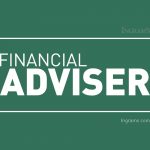HOME | ABOUT US | MEDIA KIT | CONTACT US | INQUIRE
HOME | ABOUT US | MEDIA KIT | CONTACT US | INQUIRE
With the economic recovery now into latter stages, how are the fundamentals poised?

With the economic recovery now into latter stages, how are the fundamentals poised?
We live in a world of change. In fact, we see significant signs of acceleration of change no matter where we look. There is an acceleration of change in political environments, acceleration of change in both business and consumer sentiment, and an acceleration in economic growth and consumption expenditures.
In addition, our outlook is calling for acceleration trends to continue in 2017.
While we are anticipating an upward bias towards both interest and inflation trends, I doubt we will see high levels of either—
at least for the remainder of this business cycle.
Business Cycle
What evidence do I see that suggests inflation and interest rates may show an upward tilt for this year? I tie this question back to my view of the business cycle. There have been 10 business cycles—that period of time between recessions and ending in an economic contraction—since the end of World War II.
Typically, these cycles start with an upward push in both g overnment and business capital spending. Interest rates tend to be low
overnment and business capital spending. Interest rates tend to be low
during these times, as the Federal Reserve has been “priming the pump” during the recession with easy money policies. In these environments, economic growth tends to increase, and the economy tends to lift out of the business contraction. In addition, worker productivity growth rates tend to rise. During this time, typically interest rates and inflation remain low.
The economy’s progress eventually leads to additional hiring. Unemployment rates start to come down as the economy heals. Business capital spending growth rates start to slow. Per worker productivity growth rates tend to contract. Eventually the unemployed ranks tend to get thin, and businesses start to spend more on wages. In this environment, the later stages of an economic cycle, consumption activity rises somewhat strongly. People start to spend more money on a discretionary basis. With rising wages, business profit margins start to contract.
As costs rise, and businesses attempt to pass along these increases, prices rise, fueling rising inflationary pressures.
This upward push in inflation gives the Federal Reserve reason to start raising interest rates.
So…Where Are We?
Based on historical standards, the current business cycle is becoming aged. Since 1980, the U.S. economy has experienced four recessions. On average, the time between these recessions has been eight years. Our current business expansion officially started Q2 2009, so we are nearing the eighth year of the current expansion. Does this mean we should expect a recession soon?
I don’t believe so, but recent activity is starting to rhyme with a late-stage economy.
For example, unemployment rates have fallen from a high of 10 percent to less than 5 percent, nearing what most believe to be “full” employment. Wage gains are occurring. Core personal consumption expenditures, which had been flat on their backs for quite some time, are up 4.5% over the last year. Consumer economic sentiment is the highest it has been in 16 years. Business profit margins have been contracting for more than a year, reflecting higher cost structures. At the same time, small business optimism indexes are recently showing the strongest single-month gain we have seen in more than seven years. In other words, the economy is showing typical signs of a consumer-led growth surge, typical of later-stage economic activity.
All of this begs the question of interest rates and inflation pressure. Over the past four business cycles inflation rose by 48% during the last three years of those expansions, on average. Additionally, interest rates (as measured by the Fed Funds rate) rose by an average of 65% during the last three years of those business expansions.
Inflation rates, while still low, have risen from zero to 1.7 percent over the past year. Additionally, the Federal Reserve has started to raise the Fed Funds rate.
If history is any guide, I suspect we may see further upside pressure on both interest rates and inflation as 2017 unfolds into 2018.